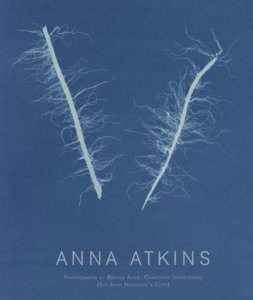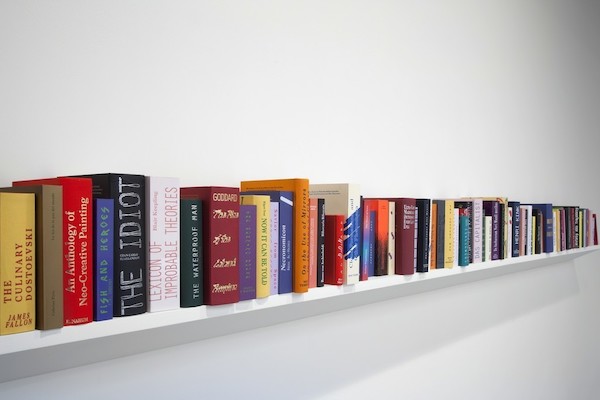In Part One of this article, gallerist Charlie James, collector Tom Peters, arts advisor Michelle Isenberg, art writer Shana Nys Dambrot, insurer William Fleischer and book designer Roy Brooks discuss art books and all their glory. Click Here.
Yah, sure. Everybody loves an art book. But why? When a fine art book is published, the action generates a series of exponential benefits that ripple across the art world. Here, we present six more art world leaders, specialists in their roles, to detail the intricacies of their profession and the many fascinating reasons that empower the art book and catalogue.
GALLERIST: CATHARINE CLARK
“An art book has a great value in so many intangible ways,” says gallerist Catharine Clark. “I grew up in a family of academics and intellectuals and books have been very important to me.” She founded San Francisco’s Catharine Clark Gallery in 1991.
“A book offers context to an artist. It will validate a career and enhance the gravitas. It is a gospel that spreads and the word becomes the value, or the evidence, of a show.” Says Clark, “There are many different forums that support an artist’s career and a book is proof of a tastemaker.”
Artist Sandow Birk spent nine years transcribing the Holy Qur’an by hand. All of the 114 chapters (surahs) are accompanied by 427 color illustrations. The New York Times called the work an “ambitious and valuable undertaking.” Says Clark, “All of the drawings have been sold to collectors and collections. Artist Sandow Birk’s book, American Qur’an, is the only remaining exhibition of the entire body of that work.

“American Qur’an” cover.
ARTS PUBLICIST: JENNIFER GROSS
“In my work, which is building careers for artists, the art book provides the documentation or proof of relevance that a news platform requires,” says Jennifer Gross, CEO of Evolutionary Media Group, a pubic relations firm. “A book becomes an appendage to a press story.”
“Our art world is international and fluid, and language doesn’t have to become a barrier. We were working with Carole Feuerman, the hyperrealist sculptor, on her installation for a museum in China. Miscommunication is always a concern, so we sent her books to the Chinese curator and the translator. Whether it’s Paris, Bilbao or Venice, we insert screen grabs of book pages and links to digital copies of an artist’s books into a press kit so that the actual artist’s statements, vision and body of work are communicated effectively.”
ART BOOKSELLER: MICHAEL DELGADO
“Obviously, I like to sell books,” laughs Michael Delgado of A.G. Geiger Art Books in LA’s Chinatown. “There is something special about an art book. I see the fans. These people are unable to afford a painting by their art world hero, but they can buy their book. I see their faces and I see the joy, the excitement and how much it means to them.”
ARTIST: KIM DINGLE
When she was a Las Vegas teenager, Kim Dingle got a job at a B. Dalton bookstore. She emphasizes, “It was in a mall.” That first job inspired several bodies of work and the show Portraits From the Dingle Library. “My art career began with books. I was a teen-age bookseller. All booksellers read, a lot,” says Dingle. “My first real job was handling books in a very physical way. Merchandising them in a retail store, creating window displays, heaping books on tables and in the aisles in a beautiful way. The art books had a real gravitational pull for me personally and keeping these sections in order was the real beginning of my art education.” The bookstore kept promoting and relocating Dingle. As district manager of twenty-seven stores, she finally quit because, “I wasn’t touching books anymore.”
Dingle discovered the gravitas of an art book and she used that physical weight in her Coffee Table Paintings in 1990. Each unique book-like object is carefully constructed, finished and painted. They are designed to be stacked. Says Dingle, “These were completely inspired by the thingness of books, the physicality of the large, monographic art books some people would buy to display on their coffee table, high-end picture books.”
Recently, she has been able to reengage with the work. Much to her delight, Sperone Westwater exhibited some of these books. “An opportunity arose and I was able to buy back a dozen of my own Coffee Table Paintings from a collector who had them for twenty-five years.” She adds, “The beauty and content and weight and smell of an art book is still so meaningful to me. I’m attached to these works above all.”
There is no shortage of written words on the art of Kim Dingle. Her bibliography of articles in prestigious publications is immense. Oddly, there is a shortage of books on Kim Dingle. As her work is well paired to the medium, I doubt we will be bereft for long.

“Coffee Table Paintings” cover.
ART CURATOR: ALLEGRA PESENTI
“I come from a long legacy of book collectors.” This might be an understatement. Allegra Pesenti inherited thousands of art books and early editions from her grandfather when she was in her early twenties. “And then I began to catalogue them,” said the Senior Curator for the Grunwald Center at the Hammer Museum. “With my emphasis on drawings and works on paper, books tend to be part of every show.”
“I spend much of my time in the Getty Research Institute. I feel I need that library context in order to write my own books or organize my shows,” confessed Pesenti, “There is an energy that emanates from books that I feel is so all-encompassing and important in terms of my inspiration.”
Inspired by a revolutionary 1843 science book of weeds, Pesenti created a survey show about immigration, as the Syrian War raged. She explains, “Like the migrant, weeds have the ability to grow and flourish in harsh conditions, generally where they are not welcomed. They make homes in these alien lands.” In 2016, the Lismore Castle Arts near Cork, Ireland, presented A Weed is a Plant Out of Place. “There were two types of books that prompted the exhibition,” said Pesenti. “Specimen books are some of the finest art books ever made, crossing the fine line between art and science. That was a very characteristic exhibition of mine, because it brought the historical into the present. These historical works were exhibited with works by contemporary artists.”
“The central feature of the show was the public debut of the very rare 1843 book by Anna Atkins, Photographs of British Algae: Cyanotype Impressions, a survey of British seaweeds. Not only is it a phenomenally beautiful book, but it is especially important. First of all, it’s by a woman, which was unusual for a woman to have been involved in such a major public project. And it was scientifically important.” Many argue that she was the first female photographer. Atkins self-published her book, “making it the first ever artist book. It was the first book made with the new, recently invented photographic form.” Said Pesenti, “The book inspired the show and prompted me to work around its mystique.” Today, there are approximately sixteen known copies of the book in existence.

“Photographs of British Algae: Cyanotype Impressions” cover.
_________________________________________
GORDY GRUNDY is a long time arts writer and art book publisher. www.GordyGrundy.com


